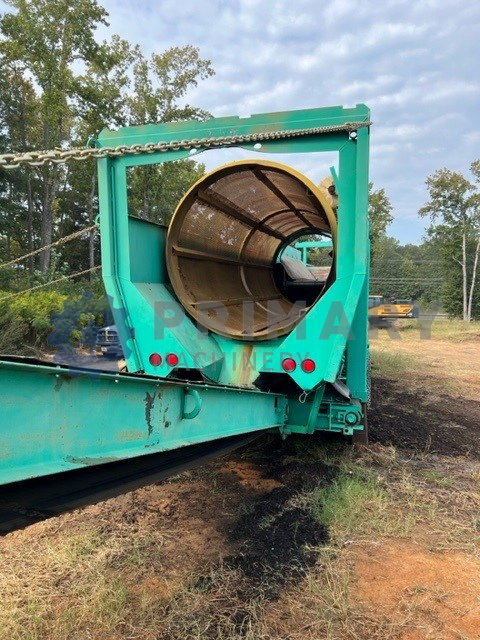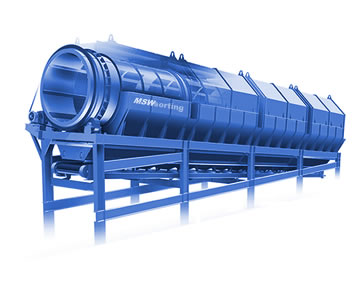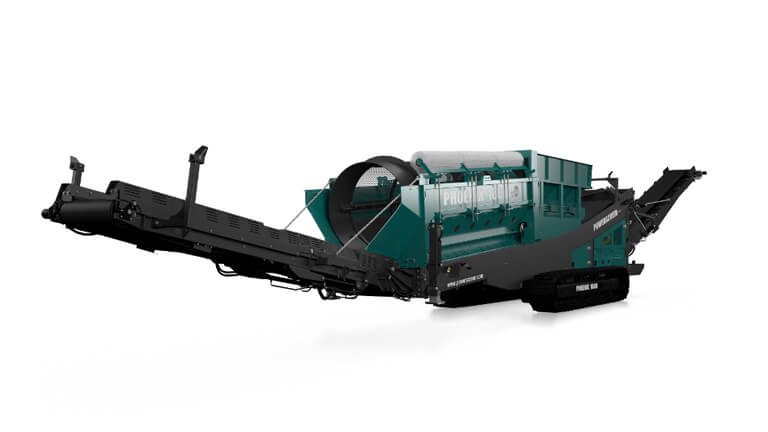Trommel Screen Modern Technology Introduced: Exploring Features and Benefits
Trommel Screen Modern Technology Introduced: Exploring Features and Benefits
Blog Article
Optimize Reusing Output With Trommel Screens: a Comprehensive Guide
As we make every effort to optimize the recycling result, one device that has obtained considerable attention is the trommel display. We will discover the variables that should be taken into consideration when picking a trommel screen and dive right into strategies that can be employed to make the most of reusing output.

The Importance of Trommel Screens
Trommel displays play an important role in different sectors because of their capacity to efficiently different and classify different products. These machines are created to filter and rotate with a variety of materials, such as soil, garden compost, sand, and crushed rock, properly dividing them based on size and thickness. This capacity to different materials is of utmost significance in markets such as mining, building and construction, waste management, and recycling.
One of the crucial reasons trommel displays are so important is their contribution to squander decrease and reusing initiatives. By properly separating materials, these displays make it possible for the recovery and reuse of important resources from waste streams. In recycling facilities, trommel displays are generally made use of to arrange various types of recyclable materials, such as plastics, metals, and paper, guaranteeing that each material is appropriately identified and refined for further use.
Furthermore, trommel screens also play an important role in the mining industry. They are used to divide beneficial minerals from waste products, boosting total performance and minimizing the ecological effect of mining operations. By separating the materials based upon dimension and density, trommel screens help to make the most of the extraction of valuable minerals while minimizing the quantity of waste that requires to be thrown away.
Exactly How Trommel Screens Job
Trommel screens operate by filtering and turning with various products to successfully separate and classify them based upon size and density. These displays include a cylindrical drum that is slanted on its axis - trommel screen. The drum is normally made of mesh or perforated plates, permitting the product to travel through while retaining bigger bits
As the drum turns, the product is fed right into the top end. The larger fragments are retained inside the drum, while the smaller bits go through the mesh or perforations. The rotation of the drum assists to raise and tumble the material, aiding in the separation process.
The rate of turning and the disposition of the drum can be adapted to manage the sieving process. By altering these specifications, operators can enhance the separation of various materials. For instance, heavier materials will clear up at the end of the drum due to gravity, while lighter materials will certainly be reached the leading and released.

Key Advantages of Making Use Of Trommel Displays
One of the significant benefits of using trommel screens is their ability to successfully separate and classify a variety of materials based upon dimension and density. This capacity is important in numerous markets, consisting of waste, recycling, and mining administration. Trommel screens are created with rotating round drums that have perforated plates or screens. As the product goes into the drum, it is raised and toppled, allowing the smaller sized particles to go through the holes while the bigger ones remain to relocate along the drum. This procedure makes sure that the desired products are divided and categorized accurately.

Another benefit of trommel displays is their convenience. They can take care of a vast array of products, consisting of aggregates, compost, metropolitan strong waste, and also infected soil. trommel screen. This adaptability makes trommel displays a crucial device for various markets, allowing them to refine different kinds of products with ease
Aspects to Think About When Selecting a Trommel Screen
One of the initial variables to consider is the size and capacity of the trommel screen. The screen configuration, such as the number of sections and disposition angle, can impact the efficiency and effectiveness of the trommel screen. Overall, by carefully considering these factors, one can choose a trommel screen that makes the most of recycling output and fulfills the details demands of their procedure.
Approaches to Make Best Use Of Reusing Result With Trommel Displays
To enhance recycling result browse around this site with trommel displays, it is vital to carry out calculated methods that take advantage of the screen's capacities and optimize effectiveness. One technique is to properly size the trommel display based on the specific reusing application. Selecting the appropriate display size ensures that the products are appropriately separated and enables a higher throughput. Additionally, it is essential to on a regular basis examine and maintain the trommel display to guarantee optimal efficiency. This includes cleaning up the screen panels to protect against blocking and changing worn-out components to avoid downtime. An additional technique is to readjust the trommel screen's disposition angle. By finding the optimum angle, the screen's performance can be made the most of, causing improved splitting up and increased reusing result. Making use of a mix of different display dimensions or adding extra testing phases can enhance the screening procedure and boost the purity of the recycled materials. Ultimately, incorporating advanced modern technologies, such as automated sorting systems or optical sorting gadgets, can better optimize recycling outcome by improving the splitting up process and enhancing the healing price of beneficial materials. By implementing these tactical methods, recycling facilities can maximize their outcome and contribute to a much more sustainable future.
Conclusion
By taking into consideration crucial factors such as screen maintenance, size, and ability needs, one can choose the most appropriate trommel display for their reusing operations - trommel screen. Carrying out strategies like appropriate product prep work and regular maintenance can additionally boost the efficiency and productivity of trommel screens, inevitably leading to a greater recycling output.
In recycling centers, trommel displays are commonly used to sort various kinds of recyclable products, such as plastics, steels, and paper, making sure that each product is effectively classified and processed for further use.
Trommel screens are created with revolving round drums that have perforated plates or displays. The display arrangement, such as the number of sections and inclination angle, can impact the efficiency and efficiency of the trommel screen.To enhance recycling outcome with trommel displays, it is vital to apply critical approaches that capitalize on the screen's capabilities and take full advantage of effectiveness. By thinking about crucial aspects such as screen dimension, upkeep, and ability needs, one can pick the most appropriate trommel screen for their recycling procedures.
Report this page